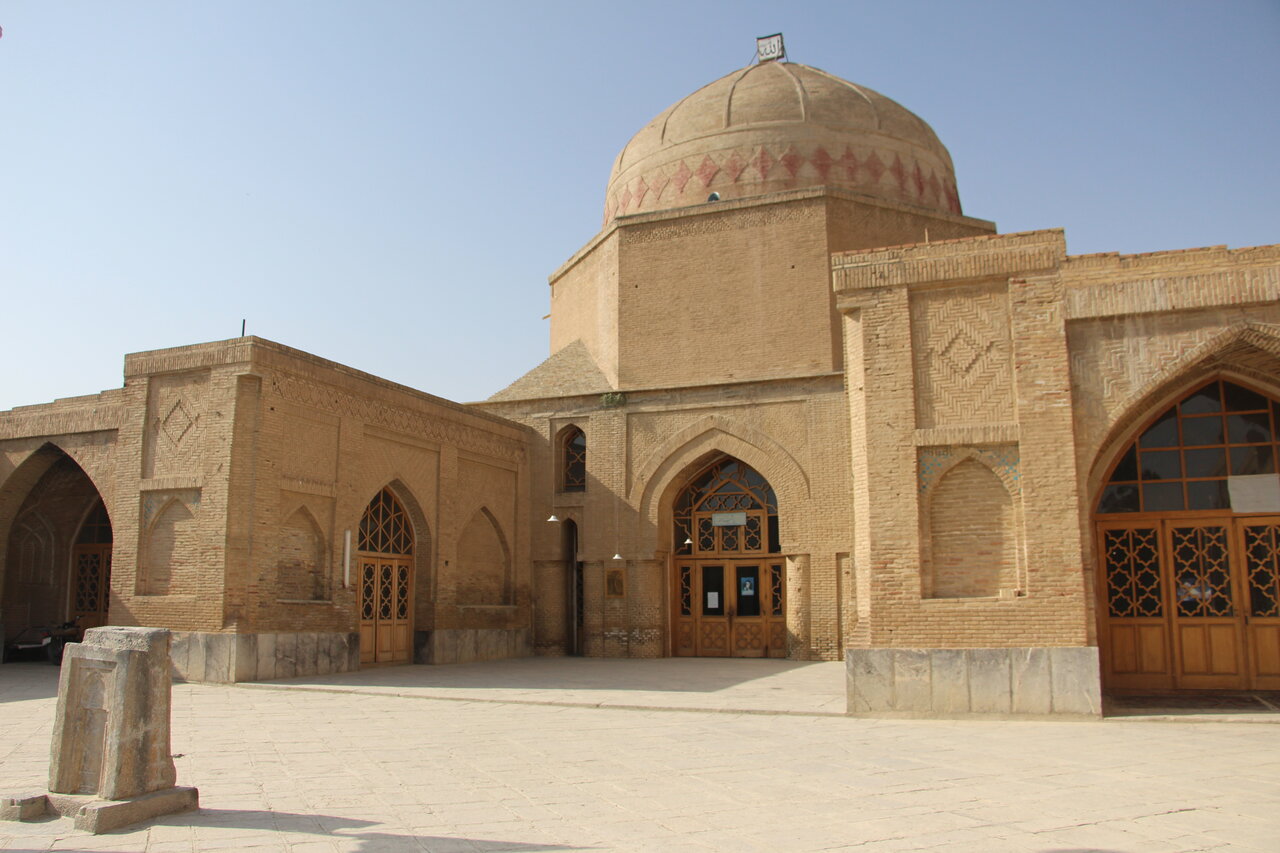Discover architectural splendor of Golpayegan mosque

TEHRAN – Visiting ancient mosques as a sightseer offers a unique and enriching experience that goes beyond mere architectural admiration. These historic religious sites serve as living museums, preserving centuries of history, culture, and artistry.
The Friday Mosque of Golpayegan, a historic gem in central Iran, offers visitors a captivating glimpse into the architectural grandeur of the Seljuk era and the subsequent Qajar period.
Originally constructed upon the order of Muhammad I Tapar, the sultan of the Seljuk Empire from 1105 to 1118, this mosque has evolved through the centuries, blending distinct architectural styles into a harmonious whole.
The mosque’s most ancient part, the Seljuk dome chamber, is a remarkable example of the Chahar-Taq style (Chahar-Taq is an ancient square-shaped brick room surmounted by a domed roof(.
This brick sanctuary, adorned with intricate geometric motifs and Kufic inscriptions, provides a serene and historically rich environment for prayer and contemplation. The dome chamber, with its vaulted archways and embedded columns, showcases the architectural brilliance of the Seljuk period. Light streams into the chamber through honeycomb windows at the base of the dome, creating a peaceful and contemplative atmosphere.
A highlight of the mosque is its single minaret, which stands outside the precinct behind the qibla wall. Dating from the Seljuk period, this minaret has an octagonal base and a cylindrical shaft adorned with simple brick patterns and remnants of turquoise tiles. The minaret’s design, with its shallow niches and off-center tower, adds a distinctive character to the mosque’s outline.
During the Qajar period in the nineteenth century, the mosque was expanded into a monumental four-iwan structure, forming a roughly rectangular layout with vaulted and domed prayer halls surrounding a spacious courtyard. This courtyard, measuring twenty-six meters wide and thirty-two meters deep, is symmetrically arranged with grand iwans on its northeast and southwest sides and smaller iwans on the northwest and southeast sides. The main entrance opens into the northeast iwan, inviting worshippers and visitors into the tranquil courtyard.
The grand southwestern iwan leads directly to the original Seljuk dome chamber, which features a beautifully adorned mihrab niche on its qibla wall. The mihrab, with its stucco muqarnas hood and intricate inscriptions, is a testament to the detailed craftsmanship of the Seljuk era. Surrounding the mihrab, brick panels with geometric patterns and Kufic inscriptions add to the mosque’s visual and spiritual appeal.
Visitors to the Friday Mosque of Golpayegan can immerse themselves in centuries of Islamic architectural heritage, from the Seljuk to the Qajar periods. The blend of ancient and more recent architectural elements makes this mosque a fascinating destination for those interested in history, art, and spirituality. Whether exploring the serene dome chamber, wandering through the expansive courtyard, or admiring the towering minaret, visitors will find a unique and enriching experience at this historic mosque.
Located in central Iran, Golpayegan is 156 km northwest of Isfahan. It shares borders with Khomein to the north, Khansar to the south, Aligudarz to the west, and Meymeh to the east. Golpayegan experiences a four-season climate with cold winters, warm summers, and temperate springs and autumns.
Ancient mosques are often architectural masterpieces, showcasing the ingenuity and craftsmanship of their builders. From intricate tile work and ornate calligraphy to grand domes and towering minarets, these structures embody the zenith of Islamic art and architecture. Sightseers can marvel at the meticulous details and sophisticated engineering that have allowed these buildings to stand the test of time. The aesthetic beauty and structural complexity of ancient mosques not only captivate visitors but also inspire a sense of awe and appreciation for human creativity and dedication.
In addition to their religious and architectural significance, ancient mosques often occupy central locations in historic cities, surrounded by bustling bazaars, narrow alleyways, and other historical landmarks. This makes them ideal starting points for exploring the broader historical and cultural landscape of the area.
AM
Leave a Comment